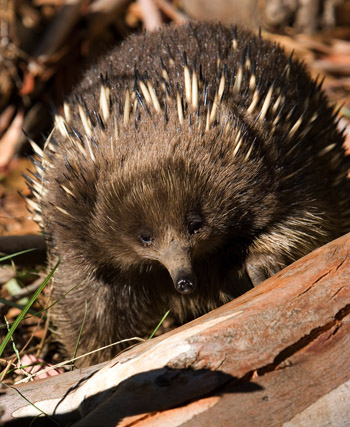 Australia is a lucky country. Our society, our culture and the diversity of our people make us industrious, free-thinking and strong. But that barely scratches the surface.
Australia is a lucky country. Our society, our culture and the diversity of our people make us industrious, free-thinking and strong. But that barely scratches the surface.
Australia is one of just twelve nations ecologically described as “mega-diverse”, and the only one with a first-world economy. Nearly every kind of ecosystem on the planet is represented somewhere here. Moreover, many of our plants and animals are found no-where else in the world, and continue to inspire scientists of every discipline with their variety and extraordinary adaptations for survival.
Australia is the centre of diversification for the world’s most enigmatic mammals, the Marsupials, and boasts the richest array of reptiles on the planet. Meanwhile, on the domestic front, our forebears have bred some of the most magnificent specimens of livestock in the agricultural world, whilst our land’s traditional owners offer to share with us a unique spiritual connection to our wild animals that many nations have sadly lost.
In short, the very essence of our heritage … as a landmass and as a people … is founded upon four-legs.
At Kingbilli, life epitomises that fact, and our approaches to tourism, farming and wildlife conservation are combined to create an example of how human and animal life can live together in health, happiness and harmony.
We focus on a simple life: veggies from the garden, water from the stream, heat from sustainable timber, fertiliser from the horses and llamas and rotational strip grazing to promote native grasses and reduce invasive weeds naturally, without the need for harmful chemicals or destructive ploughing.
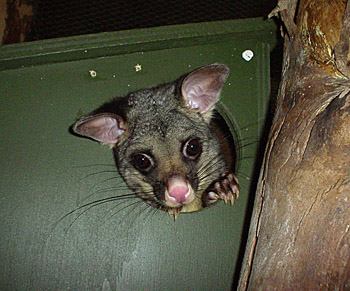 The property is mapped relative to habitat types, and uses planned and zoned accordingly, ensuring everyone has a sustainable share. Wildlife have exclusive rights over here, livestock and people over there, and shared zones in-between where careful compromise ensure all parties can go about their daily business without harming each other in any way.
The property is mapped relative to habitat types, and uses planned and zoned accordingly, ensuring everyone has a sustainable share. Wildlife have exclusive rights over here, livestock and people over there, and shared zones in-between where careful compromise ensure all parties can go about their daily business without harming each other in any way.
Our wildlife-exclusive, shared and livestock-exclusive zones are matched in size. For every acre of pure paddock, is an acre of preserved or restored native habitat.
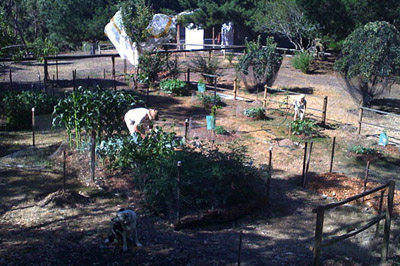 In the wildlife zones, all is untouched: domestic animals are kept out, and the only human interference is to selectively remove weeds or replant critical species, or perhaps add the odd artificial nestbox or watering point as required. No timber is harvested, and any trees which fall stay as they fell, creating additional habitat complexity as mother nature intended.
In the wildlife zones, all is untouched: domestic animals are kept out, and the only human interference is to selectively remove weeds or replant critical species, or perhaps add the odd artificial nestbox or watering point as required. No timber is harvested, and any trees which fall stay as they fell, creating additional habitat complexity as mother nature intended.
In the livestock zone, infrastructure is designed for maximum safety, ensuring travelling wildlife cannot become entangled or injured.
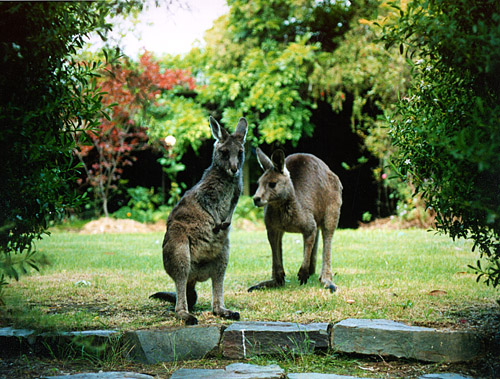 Post and rail fence construction is preferred above all else, permitting possums to pass through treeless areas without risking crossing the ground, where predators may be lurking. Trees encircle paddocks at every opportunity, to maintain interconnecting cover for birds and insects, and provide windbreaks for the stock. Here timber is harvested as necessary.
Post and rail fence construction is preferred above all else, permitting possums to pass through treeless areas without risking crossing the ground, where predators may be lurking. Trees encircle paddocks at every opportunity, to maintain interconnecting cover for birds and insects, and provide windbreaks for the stock. Here timber is harvested as necessary.
The shared zone comes in two forms – Human/Wildlife shared, and Livestock/Wildlife shared. The former consists of acres upon acres of gardens, which benefit us in beauty as much as they do the wildlife in habitat. Indeed, the keen observer will find more possums, gliders and birds in this particular shared zone than in the wildlife exclusive areas… as who would want to go it alone in the bush when you can live amidst a gastronomic smorgasbord apparently maintained purely for your benefit?
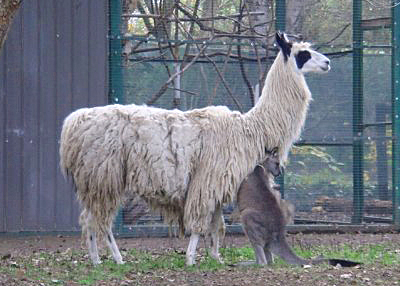 Meanwhile the Livestock/Wildlife shared areas are peaceable places where retired horses and tubby wallabies graze side by side with a smattering of llamas and mobs of kangaroos, on the slopes of the hillcountry where native grasses range amongst towering eucalypts and belts of wattles and kunzea. Timber is harvested very selectively, with decaying eucalypts and other critical habitat trees fiercely protected.
Meanwhile the Livestock/Wildlife shared areas are peaceable places where retired horses and tubby wallabies graze side by side with a smattering of llamas and mobs of kangaroos, on the slopes of the hillcountry where native grasses range amongst towering eucalypts and belts of wattles and kunzea. Timber is harvested very selectively, with decaying eucalypts and other critical habitat trees fiercely protected.
And so far, we think it’s working. Our llamas, horses and ponies are fit and healthy, as are we, our streams flow clear, our soil is good… and there are nearly 200 native species resident on site, and counting!

